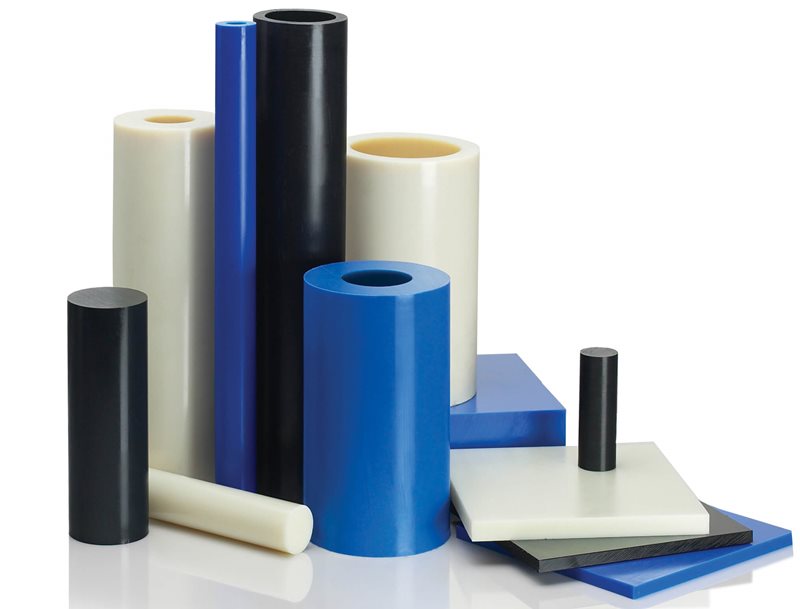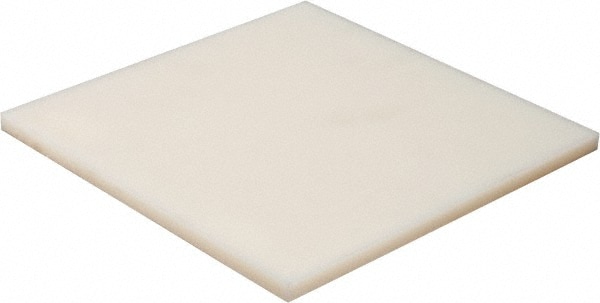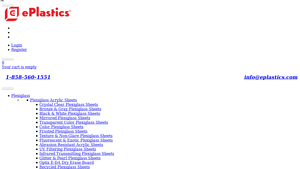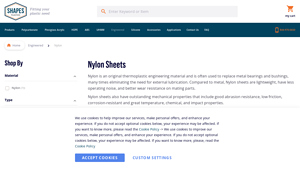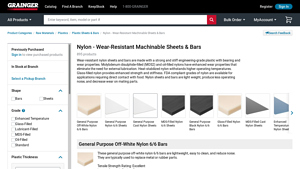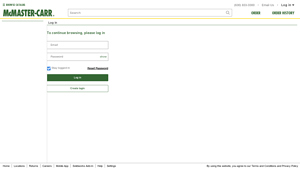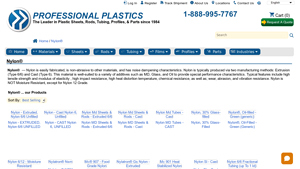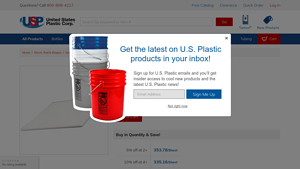Nylon Plastic Sheet Guide: Type, Cost, Top List…
Introduction: Navigating the Global Market for nylon plastic sheet
In today’s global marketplace, sourcing nylon plastic sheets presents both opportunities and challenges for B2B buyers. As industries across Africa, South America, the Middle East, and Europe seek lightweight, durable, and versatile materials, understanding the diverse offerings of nylon sheets can significantly impact operational efficiency and cost management. This comprehensive guide will present a deep dive into the types, applications, and unique characteristics of nylon plastic sheets, helping decision-makers navigate their options effectively.
This guide not only explores the various types of nylon, such as Nylon 6/6 and filled variations like Nylon MDS, but also addresses critical aspects of supplier vetting, ensuring that businesses select trustworthy partners in manufacturing. With insights into market pricing, shipping, and customization capabilities, buyers will gain the confidence to choose products that align with their specific needs—be it for manufacturing components, wear-resistant applications, or engineering solutions.
International buyers will find tailored strategies that consider regional dynamics and market trends, empowering them to make informed purchasing decisions. By leveraging this guide, businesses can enhance their procurement strategies, ultimately securing high-quality nylon plastic sheets that meet both performance and budgetary requirements efficiently.
Understanding nylon plastic sheet Types and Variations
| Type Name | Key Distinguishing Features | Primary B2B Applications | Brief Pros & Cons for Buyers |
|---|---|---|---|
| Nylon 6/6 | High strength, excellent wear resistance, low friction | Industrial parts, bushings, bearings | Pros: Lightweight, reduces noise; Cons: Absorbs moisture, may require treatment for certain applications. |
| Nylon MDS (Molybdenum Disulfide Filled) | Enhanced load-bearing capacity, improved wear properties | Heavy-duty applications, high-load bearings | Pros: Superior performance under stress; Cons: Higher cost due to added materials. |
| Cast Nylon | Superior impact resistance, better machining quality | Custom parts, wear strips, gears | Pros: Excellent durability; Cons: More expensive and heavier than extruded options. |
| Extruded Nylon | Economical production, consistent thickness | General-purpose applications, prototypes | Pros: Cost-effective, versatile; Cons: Limited mechanical properties compared to cast nylon. |
| Nylon 12 | Lower moisture absorption, good chemical resistance | Automotive components, fuel tanks | Pros: Stable in wet environments; Cons: Less common and may have limited availability. |
What are the characteristics and applications of Nylon 6/6 sheets?
Nylon 6/6 is a widely used engineering plastic known for its high strength and excellent wear resistance. This type of nylon exhibits low friction, making it ideal for applications such as bushings and bearings in industrial settings. When considering purchasing Nylon 6/6, buyers should be aware of its tendency to absorb moisture, which can affect its mechanical properties. Proper treatment or sealing may be necessary for specific applications, especially in humid environments.
How does Nylon MDS enhance performance in demanding applications?
Nylon MDS, or Molybdenum Disulfide-filled Nylon, is specifically designed for high-load applications. The addition of molybdenum disulfide enhances the material’s load-bearing capacity while maintaining its impact resistance. This variation is particularly suitable for heavy-duty bearings and components that experience significant wear. Buyers should consider the increased cost associated with this enhanced performance, but the investment can be justified in applications where durability and reliability are critical.
What advantages does Cast Nylon offer for custom manufacturing?
Cast Nylon is known for its superior impact resistance and better machining qualities compared to other nylon types. It is often used in custom parts, wear strips, and gears due to its excellent durability. However, buyers should note that Cast Nylon tends to be heavier and more expensive than extruded alternatives. When sourcing Cast Nylon, it is essential to evaluate the specific mechanical requirements of the application to ensure that the benefits outweigh the costs.
What are the benefits and limitations of Extruded Nylon sheets?
Extruded Nylon sheets are produced through a cost-effective process that allows for consistent thickness and a variety of sizes. These sheets are versatile and can be used in a range of general-purpose applications, making them a popular choice for prototypes and smaller projects. However, while they are economical, extruded nylon may have limited mechanical properties compared to cast nylon. Buyers should assess their specific needs to determine if the trade-off in performance is acceptable for their applications.
Why choose Nylon 12 for specific industrial applications?
Nylon 12 is notable for its lower moisture absorption and good chemical resistance, making it an excellent choice for environments that require stability in wet conditions. It is commonly used in automotive components and fuel tanks where durability and resistance to chemicals are paramount. However, buyers should be aware that Nylon 12 is less common than other nylon types, which may affect availability and pricing. When considering Nylon 12, it is essential to evaluate the specific environmental conditions it will face in application.
Key Industrial Applications of nylon plastic sheet
| Industry/Sector | Specific Application of Nylon Plastic Sheet | Value/Benefit for the Business | Key Sourcing Considerations for this Application |
|---|---|---|---|
| Automotive | Manufacturing of lightweight components like bushings and gears | Reduces overall vehicle weight, enhancing fuel efficiency | Ensure compliance with automotive standards and regulations |
| Aerospace | Production of non-metallic components for aircraft interiors | Decreases weight while maintaining structural integrity | Focus on high-performance grades and certifications |
| Food Processing | Fabrication of conveyor belts and machine parts | Offers durability and wear resistance in harsh environments | Consider FDA compliance for food contact applications |
| Machinery and Equipment | Replacement of metal parts in machinery assemblies | Lowers maintenance costs due to reduced wear and lubrication needs | Evaluate material specifications for load-bearing applications |
| Electrical and Electronics | Insulation and structural components in devices | Provides excellent dielectric properties and durability | Assess thermal and chemical resistance requirements |
How Is Nylon Plastic Sheet Used in the Automotive Industry?
In the automotive sector, nylon plastic sheets are commonly employed in the production of lightweight components such as bushings, gears, and other mechanical parts. By replacing traditional metal components, manufacturers can significantly reduce vehicle weight, thereby enhancing fuel efficiency and performance. For B2B buyers, it’s crucial to source nylon sheets that meet industry standards for mechanical strength and thermal stability to ensure reliability in high-stress environments.
What Are the Applications of Nylon Plastic Sheets in Aerospace?
Aerospace applications leverage the unique properties of nylon sheets to create non-metallic components used in aircraft interiors. These materials are favored for their lightweight nature and excellent structural integrity, which are vital for fuel efficiency and safety in aviation. Buyers in this industry should prioritize sourcing high-performance nylon grades that comply with stringent aerospace certifications to guarantee performance under extreme conditions.
How Are Nylon Plastic Sheets Beneficial in Food Processing?
In the food processing industry, nylon plastic sheets are utilized for fabricating conveyor belts and machine parts, where durability and wear resistance are paramount. These sheets can withstand harsh cleaning agents and high wear environments, making them ideal for food handling applications. International buyers must ensure that the nylon sheets are FDA-compliant to avoid any contamination issues and adhere to safety regulations.
What Role Do Nylon Plastic Sheets Play in Machinery and Equipment?
Nylon plastic sheets serve as effective replacements for metal parts in various machinery assemblies, offering significant advantages in reducing wear and maintenance costs. Their low friction properties allow for smoother operation, which is essential in high-performance machinery. When sourcing for this application, it is vital to consider the specific load-bearing requirements and ensure the material specifications align with operational demands.
Why Are Nylon Plastic Sheets Important in Electrical and Electronics Applications?
In the electrical and electronics sector, nylon plastic sheets are crucial for producing insulation and structural components in devices. They provide excellent dielectric properties, ensuring safety and reliability in electrical applications. Buyers should focus on sourcing nylon grades with superior thermal and chemical resistance to meet the demands of various electronic environments and ensure long-term durability.
3 Common User Pain Points for ‘nylon plastic sheet’ & Their Solutions
Scenario 1: Difficulty in Sourcing Specific Sizes and Grades of Nylon Plastic Sheets
The Problem: B2B buyers often struggle to find nylon plastic sheets that meet specific dimensions and material grades for their applications. This challenge is particularly pronounced for companies in manufacturing or engineering sectors that require tailored solutions for unique projects. Many suppliers offer standard sizes but lack the capability to provide custom cuts or specific grades like Nylon 6/6 with molybdenum disulfide (MDS) for enhanced wear resistance. This can lead to production delays and increased costs due to the need for secondary machining or sourcing from multiple suppliers.
The Solution: To effectively address this sourcing challenge, buyers should prioritize suppliers that specialize in custom cut-to-size services. Look for manufacturers that provide an online platform with a clear ordering process for specific dimensions and grades. Engage with suppliers that offer technical support to help identify the right type of nylon for your needs. For instance, if your application demands higher load-bearing capacity, ensure the supplier can provide Nylon MDS. Establishing a strong relationship with a reliable supplier can not only streamline procurement but also lead to better pricing and faster turnaround times. Consider signing long-term contracts with suppliers who consistently meet your specifications to secure better rates and reliability.
Scenario 2: Concerns Over Material Performance Under Various Conditions
The Problem: Another significant pain point for B2B buyers is uncertainty regarding the performance of nylon plastic sheets in specific environmental conditions, such as high humidity or extreme temperatures. Nylon is known to absorb moisture, which can lead to dimensional changes and affect its mechanical properties. Buyers in industries such as automotive or aerospace need assurance that the materials they purchase will perform consistently in their applications, especially when durability and reliability are paramount.
The Solution: To mitigate these concerns, buyers should request detailed technical data sheets from suppliers that outline the performance characteristics of nylon plastic sheets under various conditions. Look for suppliers who can provide case studies or examples of successful applications in similar environments. Additionally, consider conducting your own material testing or requesting samples for preliminary evaluation. Buyers should also explore alternative formulations or additives, such as moisture-resistant coatings or modified nylons, to enhance performance in specific conditions. Engaging in thorough discussions with suppliers about your application requirements can lead to tailored solutions that ensure reliability and performance.
Scenario 3: High Costs Associated with Inventory and Waste
The Problem: B2B buyers frequently face high costs related to inventory management and material waste when working with nylon plastic sheets. Ordering large quantities to secure lower prices can lead to excess stock that may not be used, especially if project demands fluctuate. Additionally, the need for precise cuts can result in off-cuts that go unused, contributing to waste and higher overall expenses. This issue is particularly pressing for small to medium-sized enterprises with limited budgets.
The Solution: To effectively manage costs and minimize waste, buyers should explore suppliers that offer just-in-time delivery and small batch production options. This allows businesses to order only what they need, reducing the risk of excess inventory. Furthermore, consider partnering with suppliers that provide cutting services to your specifications to ensure minimal waste from off-cuts. Implementing a proactive inventory management system that tracks usage and demand trends can also help in making informed purchasing decisions. Additionally, engaging in collaborative forecasting with suppliers can lead to better alignment of supply with actual needs, ultimately reducing costs and waste in the long run.
Strategic Material Selection Guide for nylon plastic sheet
What Are the Key Properties of Nylon Plastic Sheets for B2B Applications?
Nylon plastic sheets are primarily categorized into different types based on their formulation and manufacturing process. The most common types include Nylon 6, Nylon 6/6, and Nylon MDS (Molybdenum Disulfide-filled Nylon). Each type possesses unique properties that cater to various industrial applications.
Nylon 6/6: The Versatile Engineering Plastic
Nylon 6/6 is known for its excellent strength, stiffness, and wear resistance. It can withstand temperatures up to 120°C and has good chemical resistance, making it suitable for various mechanical applications.
Pros: Its high tensile strength and low friction properties make it ideal for use in bearings and bushings, where reduced wear is crucial. The material is also lightweight, which can lead to overall cost savings in transportation and installation.
Cons: However, Nylon 6/6 is hygroscopic, meaning it absorbs moisture, which can affect its dimensional stability and mechanical properties over time. This characteristic may require additional considerations in humid environments.
Impact on Application: In applications involving moving parts, such as conveyor systems, the moisture absorption can lead to performance inconsistencies. Buyers in regions with high humidity, such as parts of Africa and South America, should consider moisture-resistant coatings or treatments.
Nylon MDS: Enhanced Load-Bearing Capacity
Nylon MDS incorporates molybdenum disulfide to improve its load-bearing capacity while maintaining impact resistance. This type is particularly advantageous in applications where high wear resistance is necessary.
Pros: The addition of MDS significantly enhances the material’s performance in high-load situations, making it suitable for heavy machinery components. Its low friction properties reduce the need for lubrication, which can lower maintenance costs.
Cons: The manufacturing complexity increases due to the added materials, which may lead to higher costs. Additionally, MDS-filled nylon can be more brittle compared to standard nylon, limiting its use in applications requiring high impact resistance.
Impact on Application: For industries such as mining or heavy machinery, where durability is paramount, Nylon MDS can be an excellent choice. However, buyers should ensure compliance with local standards for heavy-duty materials, especially in Europe where regulations may be stricter.
Cast Nylon: Superior Mechanical Properties
Cast nylon sheets are manufactured through a different process that results in a denser and tougher material. This type offers superior mechanical properties, including higher impact resistance and better dimensional stability.
Pros: Cast nylon is less prone to warping and offers excellent wear resistance, making it suitable for applications in high-stress environments. Its ability to withstand higher temperatures also makes it a preferred choice for certain manufacturing processes.
Cons: The cost of cast nylon is generally higher than extruded varieties, which may deter some buyers. Additionally, the manufacturing process can be more complex, leading to longer lead times.
Impact on Application: This material is ideal for applications in the automotive and aerospace sectors, where precision and durability are critical. Buyers in these industries should verify compliance with ASTM or DIN standards to ensure quality and safety.
Summary Table of Material Selection for Nylon Plastic Sheets
| Material | Typical Use Case for nylon plastic sheet | Key Advantage | Key Disadvantage/Limitation | Relative Cost (Low/Med/High) |
|---|---|---|---|---|
| Nylon 6/6 | Bearings and bushings | High tensile strength and low friction | Hygroscopic; moisture absorption affects stability | Medium |
| Nylon MDS | Heavy machinery components | Enhanced load-bearing capacity | Higher cost and potential brittleness | High |
| Cast Nylon | Automotive and aerospace applications | Superior mechanical properties and wear resistance | Higher cost and longer lead times | High |
This strategic material selection guide provides essential insights for international B2B buyers, particularly in regions like Africa, South America, the Middle East, and Europe. Understanding the properties, advantages, and limitations of each nylon type will facilitate informed purchasing decisions that align with specific application requirements and regional compliance standards.
In-depth Look: Manufacturing Processes and Quality Assurance for nylon plastic sheet
What Are the Key Stages in the Manufacturing Process of Nylon Plastic Sheets?
The manufacturing process of nylon plastic sheets involves several critical stages that ensure the final product meets the necessary specifications for performance and durability. The key stages include material preparation, forming, assembly, and finishing.
Material Preparation
The initial phase in the production of nylon sheets begins with material preparation. Nylon, particularly Nylon 6/6, is derived from polymerization of caprolactam or hexamethylenediamine and adipic acid. The raw materials are sourced from reputable suppliers, and their quality is assessed through incoming quality control (IQC) checks. This includes testing for moisture content, particle size, and impurities.
Once the raw materials are confirmed to meet quality standards, they are dried to a specific moisture level to prevent defects during processing. This step is crucial, as nylon is hygroscopic and can absorb moisture, which may lead to processing issues such as poor mechanical properties or defects in the finished product.
How Are Nylon Sheets Formed?
The forming stage typically employs extrusion, a common method for producing nylon sheets. In this process, dried nylon pellets are melted and forced through a die to create sheets of desired thickness and width. The extrusion process is highly efficient and allows for the production of sheets with uniform thickness, which is critical for applications requiring precise specifications.
For applications that require enhanced properties, such as increased load-bearing capacity, nylon sheets can be compounded with additives like molybdenum disulphide (MDS). This modification improves wear resistance and reduces friction, making the material suitable for applications in demanding environments.
What Assembly and Finishing Techniques Are Used?
Following extrusion, the nylon sheets may undergo various assembly and finishing processes, depending on the end application. Common finishing techniques include cutting to size, machining, and surface treatments. Cutting ensures that the sheets meet specific dimensions required by B2B buyers, while machining can create intricate shapes and features necessary for particular applications.
Quality assurance during these stages is essential. Each stage is monitored through in-process quality control (IPQC) to detect any deviations from specifications early in the process. This ensures that any issues are addressed promptly, minimizing waste and ensuring consistency in product quality.
How Is Quality Assurance Managed in Nylon Sheet Production?
Quality assurance (QA) is a critical component of nylon sheet manufacturing, ensuring that products meet international standards and customer specifications.
What International Standards Apply to Nylon Plastic Sheets?
Manufacturers of nylon sheets often adhere to internationally recognized standards such as ISO 9001, which outlines quality management principles. This standard focuses on customer satisfaction, continuous improvement, and the involvement of top management in quality processes. Additionally, compliance with industry-specific standards such as CE marking for products sold in the European market or API standards for applications in the oil and gas sector may be required.
What Are the Key Quality Control Checkpoints?
Quality control in the production of nylon sheets typically involves several checkpoints:
- Incoming Quality Control (IQC): Assessing raw materials for compliance with specifications before processing.
- In-Process Quality Control (IPQC): Monitoring the manufacturing process to ensure that parameters such as temperature and pressure during extrusion remain within acceptable limits.
- Final Quality Control (FQC): Conducting tests on finished products to verify that they meet design specifications and performance criteria.
Common testing methods include tensile strength tests, impact resistance tests, and dimensional accuracy checks. These tests help ensure that the nylon sheets will perform as expected in their intended applications.
How Can B2B Buyers Verify Supplier Quality Control?
For international B2B buyers, particularly those from regions such as Africa, South America, the Middle East, and Europe, verifying the quality control processes of suppliers is essential. Here are some actionable strategies:
Conducting Supplier Audits
Buyers should perform regular audits of their suppliers to assess their quality management systems and compliance with international standards. This can include reviewing documentation related to quality processes, inspecting production facilities, and assessing the qualifications of staff involved in quality assurance.
Requesting Quality Reports
Buyers can request quality control reports that detail the results of various tests performed on the nylon sheets. These reports should include data on material properties, compliance with specifications, and any corrective actions taken in response to quality issues.
Engaging Third-Party Inspection Services
To further ensure quality, buyers may consider hiring third-party inspection services. These independent organizations can provide unbiased assessments of the supplier’s quality control processes and the quality of the products being manufactured.
What Are the Quality Control Nuances for International B2B Buyers?
International buyers must be aware of the nuances in quality control that can vary by region. For instance, regulatory requirements in Europe may differ significantly from those in Africa or South America. Understanding these differences is crucial for ensuring compliance and avoiding potential legal issues.
Additionally, cultural differences in business practices can impact how quality is perceived and managed. Buyers should engage with suppliers to clarify expectations regarding quality standards and practices to ensure alignment.
Conclusion
In summary, the manufacturing processes and quality assurance for nylon plastic sheets involve meticulous planning and execution. By understanding the key stages of production, the importance of quality control, and the specific requirements of their markets, B2B buyers can make informed decisions when sourcing nylon sheets. This knowledge not only helps in selecting reliable suppliers but also ensures that the products acquired meet their operational needs and quality expectations.
Practical Sourcing Guide: A Step-by-Step Checklist for ‘nylon plastic sheet’
In the competitive landscape of B2B procurement, sourcing nylon plastic sheets requires a strategic approach. This guide provides a comprehensive checklist to streamline the process, ensuring you make informed decisions while securing high-quality materials.
Step 1: Define Your Technical Specifications
Understanding the specific requirements for nylon plastic sheets is essential. Consider factors such as thickness, size, color, and type (e.g., Nylon 6/6 or filled variants). Clear specifications will help you communicate effectively with suppliers and ensure that the products meet your operational needs.
- Thickness and Size: Identify the dimensions required for your application.
- Type of Nylon: Determine whether you need standard nylon or specialized variants like nylon MDS for enhanced load-bearing capacity.
Step 2: Research Potential Suppliers
Conduct thorough research to find reputable suppliers who specialize in nylon plastic sheets. Look for companies with a strong market presence and positive reviews from other businesses.
- Supplier Reputation: Check online reviews, industry forums, and customer testimonials.
- Geographic Considerations: Focus on suppliers that can efficiently service your region, whether in Africa, South America, the Middle East, or Europe.
Step 3: Evaluate Supplier Certifications
Before engaging with a supplier, verify their certifications and compliance with industry standards. Certifications can indicate the quality and reliability of the products.
- ISO Certifications: Look for suppliers with ISO 9001 certification, which ensures quality management practices.
- Material Safety Data Sheets (MSDS): Request MSDS to understand the safety and handling of the nylon sheets.
Step 4: Request Samples
Obtaining samples of the nylon plastic sheets is a critical step in the sourcing process. Samples allow you to assess the material quality and suitability for your application.
- Material Assessment: Evaluate the samples for strength, durability, and other mechanical properties.
- Test Compatibility: Ensure the nylon sheets meet the specific requirements of your machinery or project.
Step 5: Compare Pricing and Terms
Once you have identified potential suppliers and evaluated their products, compare pricing and purchasing terms. This step is essential to ensure you receive the best value without compromising quality.
- Transparent Pricing: Look for suppliers who provide clear quotes without hidden fees.
- Payment Terms: Consider the payment options and terms that align with your budget and cash flow.
Step 6: Negotiate and Finalize Orders
Engage with your chosen supplier to negotiate the terms of the purchase. Effective negotiation can lead to better pricing, favorable payment terms, and additional benefits.
- Volume Discounts: Inquire about discounts for bulk orders.
- Lead Times: Confirm production and shipping timelines to align with your project schedule.
Step 7: Establish a Relationship for Future Needs
Building a strong relationship with your supplier can facilitate smoother transactions in the future. Maintain open communication and provide feedback on your experiences.
- Supplier Engagement: Regularly communicate your needs and any changes in specifications.
- Long-Term Partnership: Consider establishing a long-term partnership for ongoing supply needs, which can lead to better pricing and service.
By following this checklist, B2B buyers can navigate the procurement of nylon plastic sheets more effectively, ensuring they secure the right materials for their operations.
Comprehensive Cost and Pricing Analysis for nylon plastic sheet Sourcing
What Are the Key Cost Components in Sourcing Nylon Plastic Sheets?
When sourcing nylon plastic sheets, understanding the cost structure is crucial for B2B buyers. The primary cost components include:
-
Materials: The cost of nylon resin itself is a significant portion of the overall price. Nylon 6/6 is commonly used due to its superior mechanical properties, but variations like Nylon MDS, which includes molybdenum disulfide for enhanced load-bearing capacity, may come at a premium.
-
Labor: Labor costs associated with manufacturing processes such as extrusion or machining contribute to the overall price. Skilled labor is often necessary for custom-cut sheets, affecting the labor component.
-
Manufacturing Overhead: This includes expenses for machinery, maintenance, utilities, and facility costs. Efficient production lines can reduce overhead, impacting the final pricing.
-
Tooling: For custom sizes and specifications, tooling costs can be substantial. These costs are amortized over the production volume, making them a critical factor for buyers who need large quantities or specialized designs.
-
Quality Control (QC): Ensuring that products meet specified standards incurs costs related to testing and inspections. Higher quality certifications often lead to increased prices.
-
Logistics: Transportation costs, including shipping and handling, are particularly important for international buyers. Factors such as distance, weight, and shipping methods (air vs. sea) can significantly affect logistics costs.
-
Margin: Suppliers typically add a profit margin to cover their costs and generate revenue. This margin can vary based on the supplier’s market position and the competitive landscape.
How Do Volume and Customization Affect Pricing?
Price influencers such as volume and customization play a pivotal role in determining the cost of nylon plastic sheets.
-
Volume/MOQ: Bulk purchases often lead to lower per-unit costs. Suppliers are more inclined to offer discounts for larger orders, which can significantly enhance cost-efficiency for businesses.
-
Specifications and Customization: Custom sizes, colors, or formulations can raise prices due to the additional labor and materials involved. Buyers should assess their specific needs against the potential cost implications of custom orders.
-
Quality and Certifications: Higher quality standards or specific certifications (e.g., ISO, ASTM) typically result in increased prices. Buyers in regulated industries must factor these costs into their sourcing decisions.
-
Supplier Factors: Supplier reputation, reliability, and service level can influence pricing. Established suppliers may charge a premium for their perceived value, while newer suppliers might offer competitive rates to gain market share.
-
Incoterms: The chosen Incoterms (International Commercial Terms) can impact the final cost. Different terms dictate who is responsible for shipping, insurance, and duties, affecting the overall price structure for international transactions.
What Negotiation Strategies Can Buyers Use to Optimize Costs?
To optimize costs when sourcing nylon plastic sheets, buyers should consider the following strategies:
-
Negotiate Volume Discounts: Clearly communicate expected order volumes to leverage discounts. Suppliers are often willing to negotiate pricing based on commitment to larger purchases.
-
Evaluate Total Cost of Ownership: Consider not just the purchase price but also the long-term costs associated with maintenance, durability, and performance of the nylon sheets. This holistic approach can reveal more cost-effective options.
-
Understand Pricing Nuances for International Transactions: Buyers from regions like Africa, South America, the Middle East, and Europe must be aware of currency fluctuations, import duties, and tariffs that can affect the overall cost of sourcing.
-
Request Transparent Pricing: Engage suppliers in discussions about their pricing structures. Understanding how costs are derived can provide leverage during negotiations.
Disclaimer on Indicative Prices
Pricing for nylon plastic sheets can vary significantly based on the factors discussed. The figures mentioned are indicative and may fluctuate based on market conditions, supplier pricing strategies, and order specifics. It is advisable for buyers to obtain detailed quotes tailored to their unique needs to ensure accurate budgeting.
Alternatives Analysis: Comparing nylon plastic sheet With Other Solutions
Understanding the Importance of Alternative Solutions in Material Selection
When evaluating materials for industrial applications, it’s crucial for B2B buyers to consider alternatives to nylon plastic sheets. Understanding how different materials compare in terms of performance, cost, and ease of implementation can significantly impact operational efficiency and cost-effectiveness. This analysis provides a comparison of nylon plastic sheets against two viable alternatives: polycarbonate sheets and aluminum sheets.
Comparison Table
| Comparison Aspect | Nylon Plastic Sheet | Polycarbonate Sheet | Aluminum Sheet |
|---|---|---|---|
| Performance | High wear resistance, low friction | Excellent impact resistance | High strength and rigidity |
| Cost | Moderate cost | Generally higher cost | Higher than nylon, lower than polycarbonate |
| Ease of Implementation | Easy to cut and machine | Requires specialized tools | Requires metalworking skills |
| Maintenance | Low maintenance, resistant to wear | Low maintenance, can scratch easily | Requires periodic maintenance to prevent corrosion |
| Best Use Case | Bearings, bushings, wear parts | Safety shields, optical devices | Structural components, frames |
Detailed Breakdown of Alternatives
Polycarbonate Sheets: Pros and Cons
Polycarbonate sheets are renowned for their exceptional impact resistance, making them suitable for applications where safety and durability are paramount, such as in protective shields or safety glasses. They are lightweight and offer good thermal insulation. However, their cost is generally higher than that of nylon sheets, which can be a significant factor for budget-conscious projects. Additionally, while polycarbonate is easy to work with, it requires specialized cutting tools to prevent cracking during fabrication.
Aluminum Sheets: Pros and Cons
Aluminum sheets are favored for their strength and rigidity, making them ideal for structural applications. They can withstand substantial loads and are resistant to corrosion when properly treated. However, aluminum is often heavier than nylon, which may not be suitable for all applications. The initial cost is typically higher, and working with aluminum requires more advanced metalworking skills, which can complicate the implementation process. Maintenance is also a consideration, as aluminum surfaces may need periodic treatments to prevent oxidation.
Conclusion: Making the Right Choice for Your Business Needs
Choosing the right material for your application involves careful consideration of your specific requirements, including performance, budget, and operational capabilities. Nylon plastic sheets offer an excellent balance of durability, cost-effectiveness, and ease of use, particularly for applications involving wear and friction. However, for projects requiring higher impact resistance, polycarbonate might be the better option, while aluminum is preferable for structural integrity. By assessing these factors in relation to your operational needs, you can make a well-informed decision that aligns with your business goals.
Essential Technical Properties and Trade Terminology for nylon plastic sheet
Nylon plastic sheets are widely recognized in the manufacturing and engineering sectors for their robust performance and versatility. Below, we delve into essential technical properties and trade terminology that international B2B buyers should understand when considering nylon plastic sheets for their applications.
What are the Key Technical Properties of Nylon Plastic Sheets?
1. Material Grade: What is Nylon 6/6?
Nylon 6/6 is the most common grade used for plastic sheets due to its superior strength, stiffness, and heat resistance. This grade is essential for applications requiring durability, such as mechanical parts, bearings, and bushings. Understanding the material grade is crucial for B2B buyers as it directly influences the performance and longevity of the components manufactured.
2. Tolerance: Why is Precision Important?
Tolerance refers to the allowable variation in dimensions of the nylon sheets. For example, a tolerance of ±0.005 inches is common in precision applications. Accurate tolerances are vital in manufacturing to ensure that parts fit together correctly, minimizing the risk of operational failures. Buyers should specify their tolerance requirements to ensure that the products meet their exact needs.
3. Thickness: How Does It Affect Performance?
The thickness of nylon plastic sheets typically ranges from 0.031 inches to 1 inch. Thicker sheets offer increased strength and impact resistance, making them suitable for heavy-duty applications. Buyers should assess the specific needs of their projects to determine the appropriate thickness that balances performance with cost.
4. Surface Finish: What Should You Consider?
Surface finish impacts the wear resistance and friction properties of nylon sheets. Options include matte, polished, or textured finishes. A smoother finish can reduce friction in moving parts, while a textured surface may provide better grip in certain applications. Understanding the implications of surface finish can help buyers select the most suitable material for their intended use.
5. Moisture Absorption: Why Does It Matter?
Nylon plastic is hygroscopic, meaning it absorbs moisture from the environment. This property can affect the mechanical performance of the material, leading to dimensional changes and potential weakening of the structure. B2B buyers should consider the operating environment of their applications and choose nylon grades with appropriate moisture resistance, such as nylon MDS (Molybdenum Disulfide) for enhanced load-bearing capabilities.
What Trade Terms Should B2B Buyers Know?
1. OEM (Original Equipment Manufacturer): What Does It Mean?
OEM refers to companies that manufacture products that are sold under another company’s brand. Understanding OEM relationships is crucial for buyers seeking custom nylon plastic parts, as it determines sourcing, pricing, and quality standards.
2. MOQ (Minimum Order Quantity): How Does It Impact Purchasing?
MOQ is the smallest quantity of a product that a supplier is willing to sell. Knowing the MOQ helps buyers manage inventory costs and ensures that they can meet production needs without incurring excess expenses.
3. RFQ (Request for Quotation): Why is It Important?
An RFQ is a formal document sent to suppliers to request pricing and terms for specific products. Submitting an RFQ is a critical step in the procurement process, allowing buyers to gather competitive pricing and evaluate supplier capabilities.
4. Incoterms: What Are They and Why Do They Matter?
Incoterms (International Commercial Terms) define the responsibilities of buyers and sellers in international trade, including shipping, insurance, and tariffs. Familiarity with Incoterms is essential for B2B buyers to negotiate clear terms and avoid unexpected costs in their transactions.
5. Lead Time: How Does It Affect Supply Chains?
Lead time is the period from placing an order to receiving the product. Understanding lead times is vital for B2B buyers to plan their production schedules effectively and ensure timely delivery of components to maintain operational efficiency.
By grasping these essential technical properties and industry terminology, international B2B buyers can make informed decisions when sourcing nylon plastic sheets, ultimately enhancing their operational efficiency and product quality.
Navigating Market Dynamics and Sourcing Trends in the nylon plastic sheet Sector
What Are the Current Market Dynamics and Key Trends in the Nylon Plastic Sheet Sector?
The nylon plastic sheet market is experiencing significant growth, driven by increasing demand across various industries, including automotive, aerospace, and manufacturing. Key factors propelling this growth include the need for lightweight materials that offer superior strength, wear resistance, and reduced maintenance costs. With nylon’s excellent bearing properties, it is increasingly replacing metal components, thus enhancing operational efficiency and lowering long-term costs.
Emerging technologies, such as 3D printing and advanced manufacturing techniques, are revolutionizing sourcing trends. International B2B buyers can leverage these innovations to create custom solutions tailored to specific applications. For example, the ability to produce cut-to-size sheets allows companies to minimize waste and optimize inventory management. Additionally, the trend towards just-in-time manufacturing is encouraging suppliers to improve their logistics capabilities, facilitating faster delivery times.
Market dynamics also reflect a growing emphasis on regional sourcing strategies. Buyers from Africa, South America, the Middle East, and Europe are increasingly looking to establish local partnerships to mitigate supply chain risks and reduce lead times. This shift is particularly evident in regions like Nigeria, where local manufacturers are emerging, enhancing the competitive landscape. In Europe, particularly Germany, stringent regulations on material safety and sustainability are driving demand for high-quality, compliant nylon sheets.
How Is Sustainability and Ethical Sourcing Impacting the Nylon Plastic Sheet Market?
Sustainability is becoming a critical consideration for B2B buyers in the nylon plastic sheet sector. The environmental impact of plastic production is under scrutiny, leading to a heightened demand for eco-friendly alternatives. Ethical sourcing practices are increasingly important, as buyers seek suppliers who adhere to responsible manufacturing processes and demonstrate transparency throughout their supply chains.
The rise of ‘green’ certifications is influencing purchasing decisions. Buyers are encouraged to look for nylon products that are produced using sustainable practices, such as reduced energy consumption during manufacturing or the use of recycled materials. Certifications from recognized organizations can serve as a benchmark for assessing suppliers’ commitment to sustainability.
Moreover, the development of biodegradable nylon variants is an emerging trend that could reshape the market landscape. These innovations not only address environmental concerns but also align with consumer preferences for sustainable products. B2B buyers are advised to prioritize suppliers who are investing in sustainable technologies, as this not only enhances their corporate social responsibility profile but also positions them favorably in an increasingly eco-conscious marketplace.
What Is the Evolution of the Nylon Plastic Sheet Industry?
The nylon plastic sheet industry has evolved significantly since its inception in the mid-20th century. Initially developed as a synthetic alternative to silk, nylon quickly gained traction in various applications due to its strength and versatility. Over the decades, advancements in polymer chemistry and manufacturing processes have led to the development of specialized nylon grades, such as Nylon 6/6 and Nylon MDS, which enhance performance characteristics like wear resistance and load-bearing capacity.
As industries continue to innovate, the demand for customized solutions has surged. Today, nylon sheets are not only recognized for their mechanical properties but also for their adaptability in complex manufacturing environments. This evolution reflects a broader trend within the plastics industry towards developing materials that meet the specific needs of diverse applications, making nylon sheets an essential component in modern engineering and manufacturing.
By understanding these dynamics, international B2B buyers can make informed sourcing decisions that align with market trends and sustainability goals, ensuring they remain competitive in a rapidly changing landscape.
Frequently Asked Questions (FAQs) for B2B Buyers of nylon plastic sheet
-
How do I choose the right nylon plastic sheet for my application?
Selecting the appropriate nylon plastic sheet involves considering factors such as mechanical properties, thickness, and application requirements. For high-strength applications, Nylon 6/6 is often recommended due to its excellent wear resistance and durability. Assess the specific environmental conditions, such as temperature and humidity, since nylon absorbs moisture, which can affect performance. Additionally, consider whether you need custom cuts or specific sizes, as many suppliers offer cut-to-size options. Engaging with suppliers for technical data sheets can provide further insight into the best material for your needs. -
What are the benefits of using nylon plastic sheets over metal?
Nylon plastic sheets provide several advantages over metal, including reduced weight, lower friction, and enhanced wear resistance. They often eliminate the need for lubrication in applications like bearings and bushings, leading to lower maintenance costs. Nylon also dampens noise and is resistant to corrosion, making it suitable for various environments. Its thermal stability and ability to withstand impact further enhance its appeal in engineering applications. These characteristics can lead to cost savings and improved performance in many industrial settings. -
What are the typical applications for nylon plastic sheets in industry?
Nylon plastic sheets are widely used in various industries for applications such as bearings, bushings, gears, and conveyor components. Their low-friction and wear-resistant properties make them ideal for parts subjected to significant mechanical stress. Additionally, they are utilized in the manufacturing of electrical insulators and components requiring corrosion resistance. Industries such as automotive, aerospace, and food processing frequently leverage nylon sheets due to their versatility and durability, contributing to operational efficiency. -
What is the minimum order quantity (MOQ) for nylon plastic sheets?
Minimum order quantities (MOQ) for nylon plastic sheets can vary significantly between suppliers and depend on factors such as the type of nylon, size, and customization options. Typically, MOQs range from a single sheet to several hundred units. It’s advisable to communicate directly with potential suppliers to understand their specific policies and negotiate if necessary. Some suppliers may offer flexibility on MOQs for first-time buyers or larger projects, so exploring multiple options can yield better terms. -
What payment terms should I expect when sourcing nylon plastic sheets internationally?
Payment terms for international sourcing of nylon plastic sheets vary by supplier and can include options like advance payment, net terms (e.g., net 30 or net 60), or letters of credit. It’s crucial to establish clear agreements upfront to avoid misunderstandings. Many suppliers may require partial payment upfront, especially for custom orders, while others might offer credit terms based on your purchasing history. Always confirm the payment methods accepted, including wire transfers, credit cards, or PayPal, to ensure a smooth transaction process. -
How can I ensure quality assurance when sourcing nylon plastic sheets?
To ensure quality assurance, request certifications and compliance documents from suppliers, such as ISO certifications or material safety data sheets (MSDS). Conducting a supplier audit or visiting their facility can provide insights into their manufacturing processes and quality control measures. Additionally, consider requesting samples before placing large orders to evaluate the material’s properties firsthand. Establishing clear specifications and expectations in your purchase agreement can help maintain quality throughout the production process. -
What logistics considerations should I keep in mind when importing nylon plastic sheets?
Logistics for importing nylon plastic sheets involve understanding shipping options, customs regulations, and lead times. Evaluate the best shipping methods based on your timeline and budget, whether by air or sea. Be aware of potential customs duties and taxes applicable to your region, as these can affect overall costs. Partnering with logistics providers experienced in handling industrial materials can streamline the process, ensuring compliance and timely delivery. It’s also wise to plan for contingencies in case of delays or shipping issues. -
Can I get custom sizes or specifications for nylon plastic sheets?
Yes, many suppliers offer custom sizes and specifications for nylon plastic sheets. When requesting a quote, provide detailed information about your requirements, including dimensions, thickness, and any specific properties needed, such as color or additives. Customization may also include machining services to create parts that fit your exact specifications. It’s essential to discuss lead times and any potential minimum order quantities associated with custom requests to align with your project timelines.
Important Disclaimer & Terms of Use
⚠️ Important Disclaimer
The information provided in this guide, including content regarding manufacturers, technical specifications, and market analysis, is for informational and educational purposes only. It does not constitute professional procurement advice, financial advice, or legal advice.
While we have made every effort to ensure the accuracy and timeliness of the information, we are not responsible for any errors, omissions, or outdated information. Market conditions, company details, and technical standards are subject to change.
B2B buyers must conduct their own independent and thorough due diligence before making any purchasing decisions. This includes contacting suppliers directly, verifying certifications, requesting samples, and seeking professional consultation. The risk of relying on any information in this guide is borne solely by the reader.
Top 8 Nylon Plastic Sheet Manufacturers & Suppliers List
1. Eplastics – Nylon Sheets
Domain: eplastics.com
Registered: 1998 (27 years)
Introduction: This company, Eplastics – Nylon Sheets, is a notable entity in the market. For specific product details, it is recommended to visit their website directly.
2. Curbell Plastics – Polycarbonate Sheet 48×96 1/8 Clear
Domain: curbellplastics.com
Registered: 2000 (25 years)
Introduction: W01-02198, Polycarbonate Sheet, 48 x 96 x 0.125 in, Clear, 1/8 in thickness, UV resistant, high impact strength, lightweight, easy to fabricate, suitable for various applications including safety glazing, machine guards, and protective shields.
3. Shapes Plastics – Nylon Engineering Materials
Domain: shapesplastics.com
Registered: 2019 (6 years)
Introduction: Nylon is an original thermoplastic engineering material used to replace metal bearings and bushings, often eliminating the need for external lubrication. Key properties include:
– Lightweight
– Low operating noise
– Excellent bearing and wear properties
– Low friction coefficient
– Good abrasion resistance
– Corrosion-resistant
– Great temperature, chemical, and impact properties.
Available produ…
4. Grainger – Wear-Resistant Nylon Sheets and Bars
Domain: grainger.com
Registered: 1994 (31 years)
Introduction: This company, Grainger – Wear-Resistant Nylon Sheets and Bars, is a notable entity in the market. For specific product details, it is recommended to visit their website directly.
5. McMaster – Nylon Sheets
Domain: mcmaster.com
Registered: 1994 (31 years)
Introduction: This company, McMaster – Nylon Sheets, is a notable entity in the market. For specific product details, it is recommended to visit their website directly.
6. Professional Plastics – Nylon® Rod, Sheet, Tubes
Domain: professionalplastics.com
Registered: 1997 (28 years)
Introduction: Nylon® Rod, Sheet, Tubes available for online order from Professional Plastics. The company has been a leader in plastic sheets, rods, tubing, profiles, and parts since 1984. They offer a wide range of materials including Nylon® among others.
7. Interstate Plastics – Nylon 6 6 Extruded Sheet
Domain: interstateplastics.com
Registered: 1997 (28 years)
Introduction: {“Product Name”:”Nylon 6 6 Extruded Sheet”,”Price per Sheet”:”$25.15″,”Cut-To-Size Options”: {“Widths”: “Cut-to-size calculator available”,”Lengths”: “Cut-to-size calculator available”,”Thicknesses”: [“0.060”, “0.090”, “0.125”, “0.187”, “0.250”, “0.312”, “0.375”, “0.500”, “0.625”, “0.750”, “1.000”, “1.250”, “1.500”, “2.000”],”Quantity”: “Input field for quantity”},”Fabrication Fees”:{“Setup Fee”:”…
8. Quadrant EPP – 1/4 x 24 x 48 Nylon Sheet
Domain: usplastic.com
Registered: 1996 (29 years)
Introduction: {“Product Name”:”1/4\” x 24\” x 48\” Nylon Sheet”,”Item Number”:”47425″,”Manufacturer”:”Quadrant EPP”,”Manufacturer Part Number”:”USP 47425″,”Dimensions”:”1/4\” thickness, 24\” width, 48\” length”,”Temperature Range”:”-40°F to 225°F”,”Weight”:”15 lbs”,”Compliance”:”USDA, NSF, 3A-Dairy compliant and meets FDA standards”,”Characteristics”:”Strongest and most rigid among unmodified nylons, high melti…
Strategic Sourcing Conclusion and Outlook for nylon plastic sheet
How Can Strategic Sourcing Enhance Your Nylon Plastic Sheet Procurement?
In the competitive landscape of nylon plastic sheets, strategic sourcing emerges as a pivotal approach for B2B buyers. By leveraging the unique properties of nylon, such as its strength, wear resistance, and low friction characteristics, businesses can significantly enhance their operational efficiency and reduce long-term costs. Sourcing from reputable suppliers ensures quality materials that can replace heavier metal components, leading to lighter products with reduced noise and maintenance requirements.
Moreover, understanding the various types of nylon, including Nylon 6/6 and specialty grades like Molybdenum Disulfide (MDS) filled nylon, allows buyers to make informed decisions tailored to specific applications. This knowledge not only fosters better supplier relationships but also opens doors to customized solutions that can meet unique industrial needs.
As the demand for sustainable and efficient materials grows, international buyers from regions such as Africa, South America, the Middle East, and Europe should proactively engage with suppliers who prioritize innovation and quality. By staying informed about market trends and technological advancements in nylon production, you can position your business for success. Embrace strategic sourcing today to unlock the potential of nylon plastic sheets and drive your operations forward.
